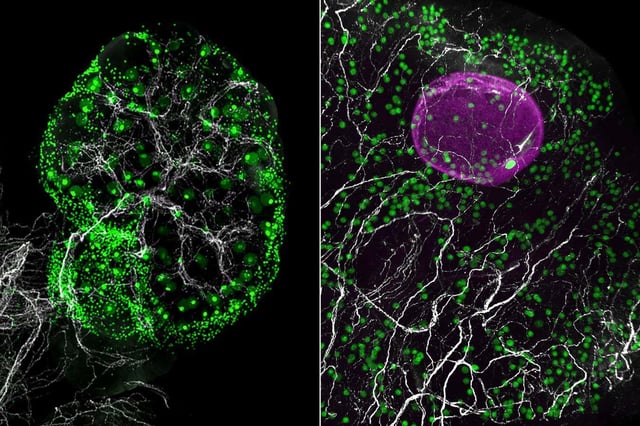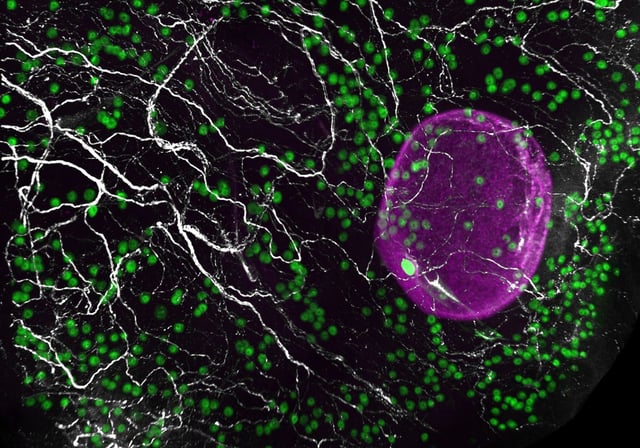Overview
- Researchers combined organ-clearing 3D light-sheet imaging with single-cell RNA sequencing to profile nearly 100,000 mouse and human ovarian cells, resolving 11 major cell types including unexpected glia.
- Human eggs were found to cluster in discrete pockets whose egg density declines with age, a pattern that contrasts with the more uniform distribution observed in mice.
- Dense sympathetic nerve networks permeate the ovary and increase with age; nerve ablation in mice yielded more eggs in reserve but fewer that matured, indicating neuromodulatory control of egg growth.
- Fibroblasts, smooth muscle and epithelial cells showed the largest age-related gene-expression shifts across species, pointing to anti-fibrotic avenues for potential intervention that now require testing.
- Strong mouse–human parallels validate mice as models for ovarian aging research, with teams launching mouse studies of candidate drugs and neuromodulation and planning progression toward primate work.

